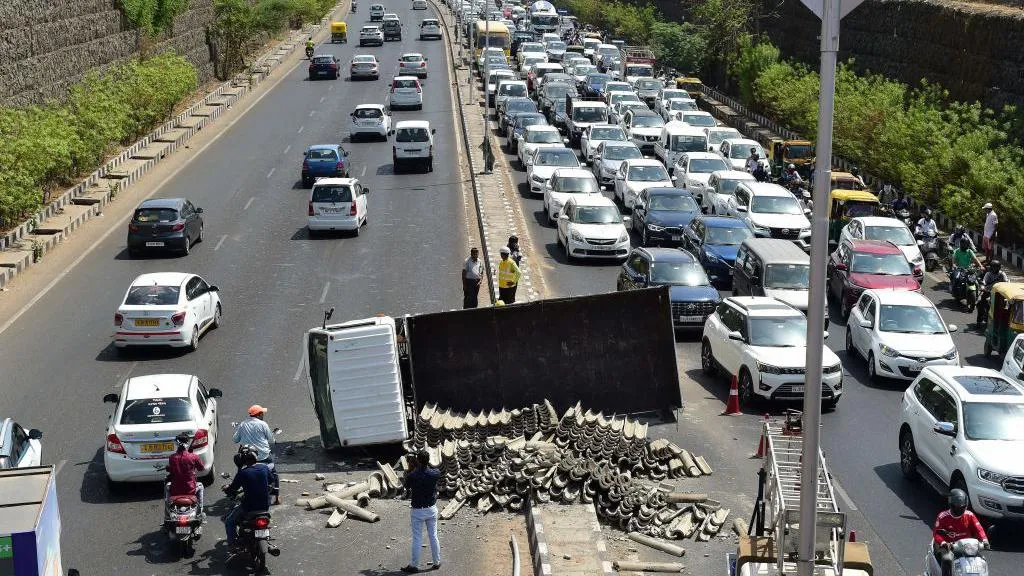Every day, India wakes up to grim headlines about road accidents. From buses plunging into gorges to motorcyclists struck by high-speed vehicles, the toll is staggering. In 2023 alone, over 172,000 lives were lost on Indian roads, averaging nearly one death every three minutes.

A Nationwide Emergency: The Statistics Tell the Story
Although the official crash report for 2023 is pending, Road Transport and Highways Minister Nitin Gadkari revealed alarming figures at a road safety event in December. Among the dead: 10,000 children, 35,000 pedestrians, and a large share of two-wheeler riders. Overspeeding was the leading cause, but the absence of basic safety practices also played a fatal role.
- 54,000 died from not wearing helmets
- 16,000 died from not using seatbelts
- 12,000 deaths were linked to overloading
- 34,000 crashes involved drivers without valid licenses
A Hazardous Mix: The Chaotic Indian Road Ecosystem
India’s roads are a chaotic blend of motorized vehicles, non-motorized transport, pedestrians, street hawkers, and even stray animals. The lack of clear segregation and poorly enforced traffic norms contribute to the chaos. Despite having the world’s second-largest road network at 6.6 million km, safety is alarmingly lacking.
Infrastructure Failures: Design Flaws That Kill
Experts say poor civil engineering is a silent killer. High medians not designed for high-speed roads can launch vehicles into rollovers. Repeated resurfacing raises road levels, causing dangerous drops on the shoulders—especially risky for two-wheelers.
“Unless installed exactly as specified, crash barriers can do more harm than good,” says Prof. Geetam Tiwari, IIT Delhi.
Crash barriers, often at incorrect heights or mounted on unsafe bases, are flipping vehicles rather than cushioning them. Medians taller than the recommended 10cm can overheat tires or launch vehicles into traffic. These engineering lapses are widespread and deadly.
Human Behavior: A Key Culprit, But Not the Only One
Minister Gadkari has repeatedly stated that human behavior is the biggest reason for accidents. From overspeeding to drunk driving, the disregard for traffic laws is rampant. But experts caution that blaming behavior alone misses the full picture.
Inadequate signage, poor enforcement, and lack of roadside emergency care all worsen the crisis. According to a report by the Law Commission of India, up to 50% of road crash victims could be saved with timely emergency response.
Copy-Paste Infrastructure: Why Western Road Designs Fail in India
India’s attempt to emulate Western-style highways is backfiring. “Widening roads often leads to higher speeds, which can be lethal in India’s mixed traffic,” warns Kavi Bhalla, road safety expert at the University of Chicago.
He adds that India lacks the crash data systems and research culture that underpins Western road safety efforts. Simply copying designs without contextual adjustments is proving disastrous.
Government Initiatives: The 5Es Strategy
To combat the crisis, India has adopted the 5Es approach—Engineering (of roads and vehicles), Education, Enforcement, and Emergency care. Pilot projects based on this strategy in select states have yielded positive results. Yet, the pace of nationwide implementation remains slow.
The Cost of Development: At What Price?
Experts agree that infrastructure is vital for economic growth, but not at the cost of human lives. “The poorest in society should not pay the price of progress,” says Mr. Bhalla. “We need to test interventions, measure outcomes, and adapt accordingly. Without this, we’re just building faster roads to faster deaths.”
The Road Ahead
India faces a pivotal moment. With rising vehicle ownership and ambitious road expansion plans, the country must balance development with safety. Unless engineering standards are enforced, human behavior is corrected, and emergency systems are strengthened, the crisis will only deepen.
Categories: India News, Public Safety, Infrastructure
Tags: road safety India, Nitin Gadkari, India road deaths, highway accidents India, TRIPP IIT Delhi, crash barriers India, Indian traffic fatalities, two-wheeler accidents, pedestrian safety, Indian road engineering









